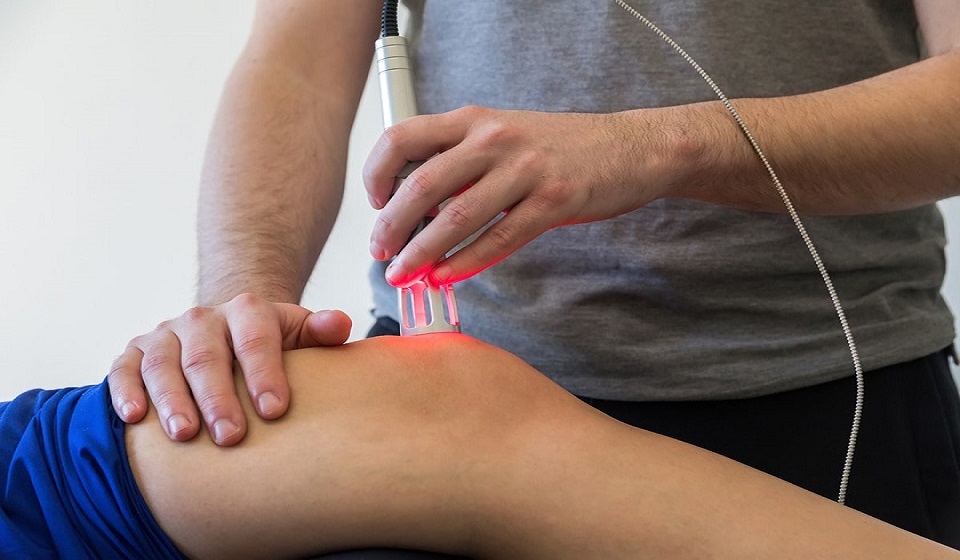
Laser therapy, also called low-level laser therapy (LLLT) or cold laser therapy, employs focused light energy to facilitate healing and alleviate discomfort. This non-invasive medical treatment uses a precise light wavelength to address affected body regions. In Leduc, Laser Therapy has gained prominence across diverse domains such as sports medicine, physiotherapy, and pain management due to its capacity to expedite tissue recovery, diminish inflammation, and offer relief from acute and chronic pain.
What Is Laser Therapy?
In Leduc, Laser Therapy is a treatment method that harnesses low-intensity laser light to interact with cells, fostering healing, pain relief, and enhanced function. The laser’s energy penetrates the skin and engages with cells, initiating beneficial biological processes.
Laser therapy devices emit a narrow, focused beam of light with adjustable intensity, wavelength, and pulse duration. The therapist or healthcare professional applies the laser directly to the affected area or uses a scanning technique to cover a broader treatment area.
Benefits of Laser Therapy:
- Pain Reduction: Laser therapy has analgesic effects, providing relief from acute and chronic pain. Light energy promotes the release of endorphins, which are natural pain-relieving substances produced by the body. Additionally, laser therapy helps to reduce inflammation, decrease nerve sensitivity, and block pain signals, leading to significant pain reduction.
- Accelerated Tissue Repair and Wound Healing: Laser therapy stimulates cellular activity, promoting the production of adenosine triphosphate (ATP), the energy source for cells. This increased energy production enhances the repair process, boosts collagen synthesis, and accelerates tissue regeneration. As a result, wounds heal faster, and tissue damage is repaired more efficiently.
- Reduced Inflammation: Laser therapy helps to reduce inflammation by decreasing pro-inflammatory cytokines and increasing anti-inflammatory cytokines. By modulating the immune response, laser therapy can alleviate swelling, redness, and heat associated with inflammation, promoting a quicker recovery.
- Improved Circulation: Laser therapy enhances blood flow and microcirculation in the treated area. This increased circulation facilitates the delivery of oxygen, nutrients and immune cells to the tissues, promoting healing and reducing the risk of infection.
- Enhanced Recovery and Rehabilitation: Laser therapy can be beneficial in sports medicine and rehabilitation settings it helps athletes recover from injuries, reduces downtime and expedites the return to sports activities. Additionally, laser therapy aids in post-operative recovery, promoting healing, reducing scar tissue formation and improving mobility.
- Non-Invasive and Non-Pharmacological: Laser therapy is a non-invasive treatment option that provides pain relief and promotes healing without the need for surgery or medication. Many individuals seeking non-pharmacological approaches to pain management and tissue repair find it a safe alternative, as it is well-tolerated with minimal side effects.
Key Points about Laser Therapy:
- Professional Evaluation: Before undergoing laser therapy, it is important to consult with a qualified healthcare professional who can evaluate your condition and determine if laser therapy is suitable for you. They will consider factors such as your medical history, the nature of your condition, and any contraindications that may affect the treatment.
- Duration and Frequency of Treatment: The duration and frequency of laser therapy sessions depend on the condition being treated and the individual’s response, usually necessitating multiple sessions for optimal outcomes. A therapist or healthcare professional will develop a treatment plan tailored to your specific needs.
- Sensations During Treatment: Laser therapy is a painless procedure that typically does not cause any discomfort. During treatment, some individuals might experience a mild warming sensation or slight tingling, which they generally tolerate well. It is important to communicate any sensations to the therapist to ensure your comfort throughout the session.
- Safety Precautions: Qualified professionals generally administer laser therapy, considering it safe. However, it is important to protect the eyes from direct exposure to laser light by wearing appropriate eye protection during the treatment. The therapist will take the necessary precautions and follow safety guidelines to ensure your well-being.
- Integration with Other Treatments: Patients often combine laser therapy with other modalities like physical therapy or medication, enhancing overall effectiveness and improving outcomes in comprehensive treatment plans.
Conclusion:
Laser Therapy in Leduc is a valuable option for those seeking pain relief, accelerated tissue repair, and enhanced function. Its non-invasive approach, minimal side effects, and versatile applications make it highly regarded across healthcare disciplines. By reducing pain, promoting tissue repair, decreasing inflammation, and enhancing circulation, laser therapy substantially enhances well-being for individuals managing acute or chronic conditions. Consult with a qualified healthcare professional to assess if laser therapy suits your specific needs and discover the potential benefits of this innovative treatment.

